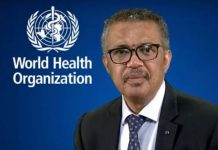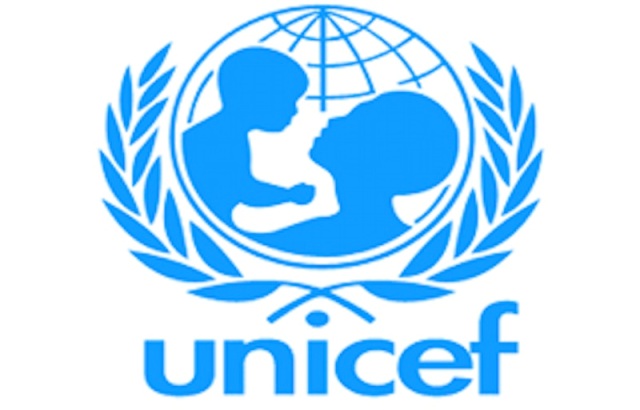An estimated 1.9 million babies were stillborn at 28 weeks of pregnancy or later in 2019, according to the first ever joint stillbirth estimates released by UNICEF, the World Health Organization (WHO), the World Bank Group and the Population Division of the United Nations Department of Economic and Social Affairs report.
The rep[ort entitled ‘A Neglected Tragedy: The global burden of stillbirths’ also revealed a global stillbirth rate of 13.9 per cent stillbirths per 1,000 total births.
The report stated that almost two million babies are stillborn every year – or 1 every 16 seconds – somewhere in the world.
It stated that a vast majority of stillbirths, 84 per cent, occur in low- and lower-middle-income countries
A stillbirth is defined in the report as a baby born with no signs of life at 28 weeks of pregnancy or more.
Besides, it stated that over 40 per cent of all stillbirths occurred during labour – a loss that could be prevented with improved monitoring and access to emergency obstetric care when required.
However, the report stated that the losses are not experienced uniformly stressing that there are huge differences in stillbirth rates across the globe, with a risk that is up to 23 times higher in the worst affected countries.
The agency stated that stillbirths were concentrated in a few countries, with the greatest number found in India, followed by Pakistan, Nigeria, the Democratic Republic of the Congo, China and Ethiopia.
“These six countries accounted for half of the estimated global number of stillbirths and 44 per cent of global live births.
Furthermore, the report noted that 2019, 3 in 4 stillbirths occurred in sub-Saharan Africa or Southern Asia, with the two regions accounting for three quarters of all stillbirths.
“In sub-Saharan Africa, the stillbirth rate of 21.7 per 1,000 total births was seven times higher than the lowest regional rate of 3.1 found in the Europe, Northern America, Australia and New Zealand region.
“More worryingly, sub-Saharan Africa’s portion of the global number of stillbirths has increased from 27 per cent in 2000 to 42 per cent in 2019 as population growth has outpaced decreases in stillbirth rates,” it said.
Besides, it explained that the unequal burden of stillbirths “is also observed within countries, as access to health care, maternal education and other socioeconomic factors differs.”
It said in high- and low-income countries alike, higher stillbirths rates are reported in rural areas than in urban areas.
“These wide discrepancies reiterate the need for all countries to take action and understand who carries the heaviest burden so that we can end preventable stillbirths for all women and families,” UNICEF stated.
Effects
The report noted that that stillbirth “has a traumatic long-lasting impact on women and their families around the world, who often endure profound psychological suffering as well as stigma from their communities, even in high-income countries.
“Perhaps even more tragically, the majority of these deaths could have been avoided with high-quality care antenatally and during birth.”
Projection
The report found that despite progress being made since 2000, stillbirths have not declined as rapidly as maternal and newborn mortality, and if current trends continue, an additional 19 million stillbirths will take place before 2030.
More than 200,000 additional stillbirths could also occur over the next 12 months in 117 low- and middle-income countries due to severe COVID-related disruptions in health care services.
Progress since 2000
Over the past two decades, the report said substantial progress has been made in reducing the stillbirth rate globally, which declined from 21.4 stillbirths per 1,000 total births in 2000 to 13.9 in 2019 – a 35 per cent reduction.
The total number of stillbirths also decreased by 32 per cent from 2.9 million to 2.0 million.
“However, these reductions have not kept pace with other indicators such as under-five mortality.
“Compared to the annual rates of reduction for other mortality indicators, the gains made in stillbirths have been much slower, with progress lagging behind across all regions since 2000.
“The reduction in mortality for children aged 1–59 months, for example, was almost double the reduction in stillbirths (4.3 to 2.3, respectively).
“Progress in preventing stillbirths has also not accelerated over the past decade, instead maintaining similar rates of reduction to the period 2000–2009.” The report stated.
Without urgent action, the report said millions of families will experience the tragic stillbirth of a baby in the next decade.
“The Every Newborn Action Plan (ENAP) calls for each country to achieve a rate of 12 stillbirths or fewer per 1,000 total births by 2030 and to close equity gaps.
“Fifty-six countries would need to accelerate their progress in order to meet the ENAP target – this means investment in quality antenatal and delivery care.
“More ambitiously, if each country’s stillbirth rate reached or fell below the current average rate in high-income countries (3 stillbirths per 1,000 total births) by 2030, an additional 6.6 million lives could be saved (scenario 4 below),” the report added.




























































